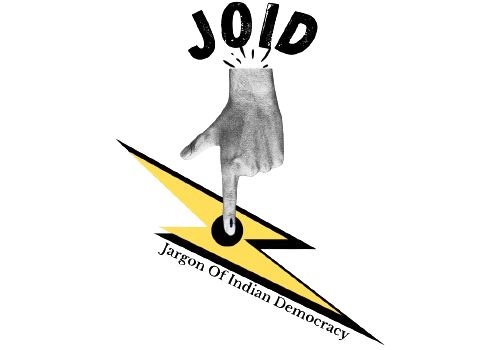
When Nitish Kumar took charge of Bihar in 2005, the state was at its lowest point. Roads were broken, power cuts lasted hours, crime ruled the streets, and women had little place outside their homes. People had lost faith in the government itself. Nitish’s early years changed that story. He became Sushasan Babu—the Chief Minister who gave millions of women education, dignity, and a voice. But two decades later, the same leader is remembered more for political flip‑flops and wasted opportunities than for reform.
The Years of Hope (2005–2010)
Law and Order Restored
● Fast‑track courts punished over 85,000 criminals (2006–2010).
● Kidnapping and murder cases fell sharply, restoring people’s confidence.
Roads and Power
● Nearly 36,000 km of rural roads were built.
● Electricity supply improved, connecting more villages.
Education and Women’s Empowerment
● Cycle Scheme (2007): lakhs of girls received bicycles to attend school. Girls’ enrolment doubled in just five years.
● 50% reservation in Panchayats brought lakhs of women into leadership roles.
● Primary schools saw thousands of new teachers, boosting enrolment.
SHGs and Rural Change
● The Jeevika programme, launched around 2006–07, began as a small experiment with women’s self-help groups (SHGs). By 2010, it had brought together 3 lakh women in these groups, giving them access to savings, small credit, training, and startup incomes.
● Over 10 lakh SHGs have now been formed under Jeevika, involving more than 1.3 crore families across Bihar
● Jeevika has built 59,085 Village Organizations (VOs) and 1,400+ Cluster Level Federations (CLFs) that federate SHGs into structured financial networks
● Additionally, Jeevika supports rural livelihoods through skills training in agriculture, food processing, tailoring, dairy, poultry, and handicrafts – boosting incomes and offering new employment avenues
● During the COVID-19 pandemic, Jeevika SHG women handled over ₹543 crore in digital banking transactions, served as bank correspondents, and supported nearly 45 lakh households in food security and relief work For the first time, poor families, especially women, felt the government was working for them. For the first time, poor families, especially women, felt the government was working for them.
The Years of Decline (2010–2024)
The 2014 Lok Sabha Shock
● In 2014, Nitish Kumar broke away from BJP and contested Lok Sabha elections alone.
● Result: JD(U) won only 2 out of 40 seats in Bihar—its worst ever performance.
● The defeat broke his confidence. Instead of rebuilding his political base or addressing
Bihar’s real problems—jobs, migration, industry—he turned inwards.
From this point, Nitish shifted from being a reformer to being a survivor.
Bureaucrats and Political Managers Took Over
● As Nitish grew obsessed with saving his chair, day‑to‑day governance was increasingly run by bureaucrats and a small coterie around him.
● Decision‑making slowed. Welfare schemes like bicycles and uniforms continued, but big reforms in jobs, industries, higher education, and urban growth stopped.
● Vested interests hijacked the system. Contracts, recruitments, and postings became dominated by a bureaucracy that no longer had strong political oversight.
Nitish’s Focus Narrowed to Power
● Instead of chasing Bihar’s development agenda, Nitish’s politics revolved around managing alliances and arithmetic in the Assembly.
● Every move—from joining RJD in 2015 to returning to BJP in 2017, leaving again in 2022, and re‑joining in 2024—was aimed only at keeping his CM chair safe.
● The reformist leader of 2005 became what many in Bihar now call a “status quo CM”, with no long‑term vision.
The Final Verdict
Nitish Kumar will always be remembered in two ways:
● 2005–2010: The reformer who gave women dignity, built roads, restored law and order, and showed Bihar a new path.
● 2010–2024: The politician who wasted momentum, failed to bring jobs, let crime rise again, and kept changing alliances—until finally re‑joining BJP before the 2024 elections.
“Bihar got its best Chief Minister in Nitish Kumar in the 2000s— but also one of its most disappointing leaders in the years after.”
Our other articles : PK’s 2030 Gameplan | Does Bengal Have a PR Problem? | A scenario of “What ifs” in Bihar | German Chancellor Fellowship discussion |Mission 58: How Congress Plans to Flip Bihar | Bengal Bellwether – 2 | Bengal Bellwether – 1 | India United – India’s message is loud & clear on terrorism a diplomatic strike on terror| The Indian Stock Market is bleeding | SUPER NARI – 25 | Caste and the Ballot in Bihar | The suicidal mission of Pakistan’s so called ‘Establishment’ | Who is Responsible for Bihar’s Migration Crisis? | Why Congress must go solo in Bihar | Jai Bhim | Old is Gold , Resurrection of ‘Dynasty Politics’ | China Faces 125% Tariff by USA: A Strategic Opportunity for India | When the Accuser Becomes the Accused
Books that enriches – India after Gandhi by Ramchandra Guha | Contesting democratic deficit by Salman Khurshid | The election that surprised India By Rajdeep Sardesai

Ravi Kumar is a political consultant and Socio-Political Writer. He comments on different contemporary political issues and writes about it as he has sound experience due to his prolonged work on the ground as persistent observer of the Democracy on field.
